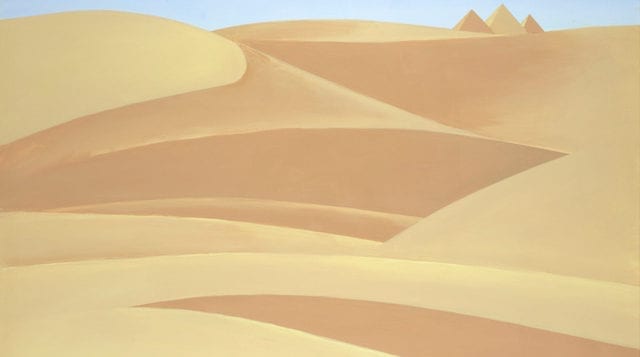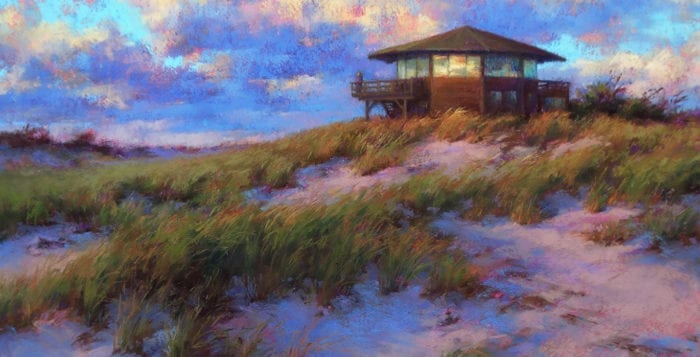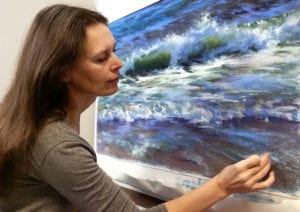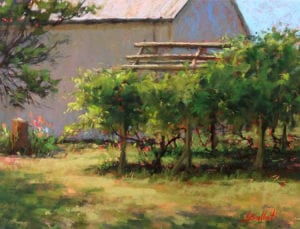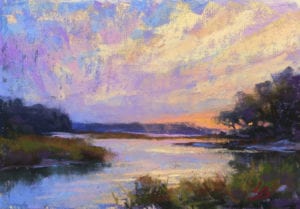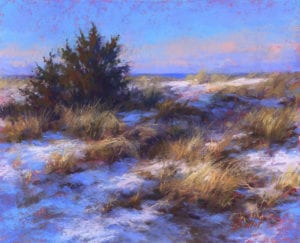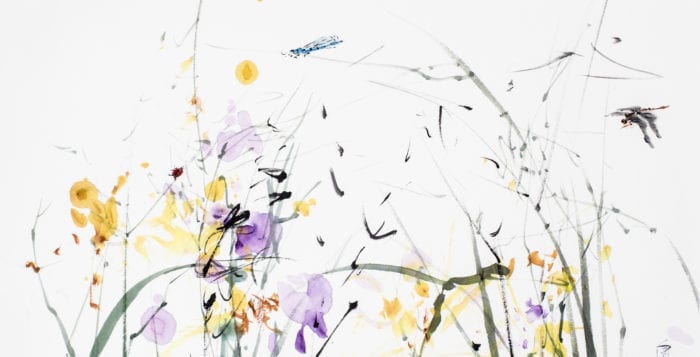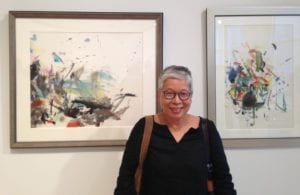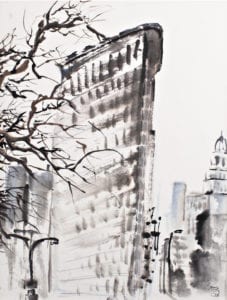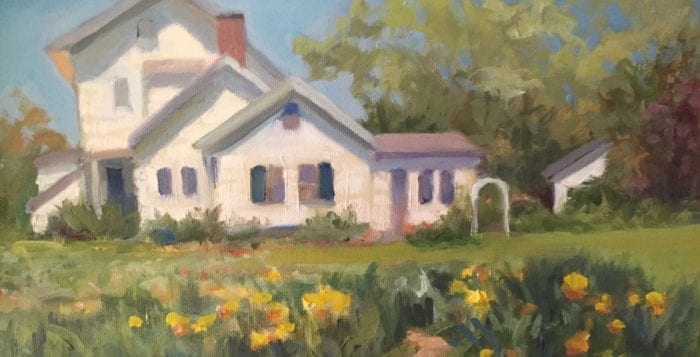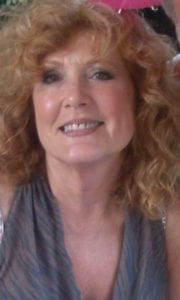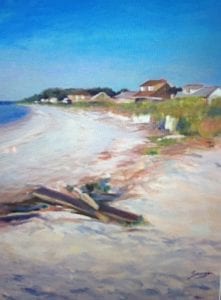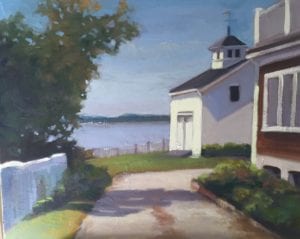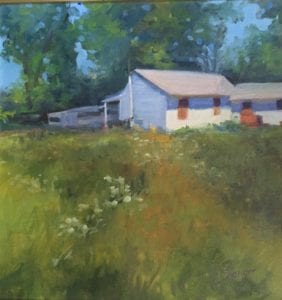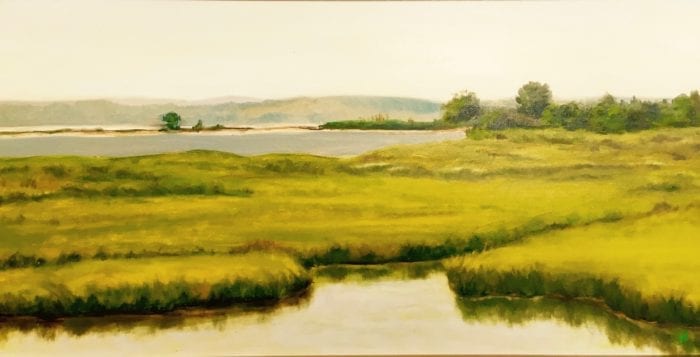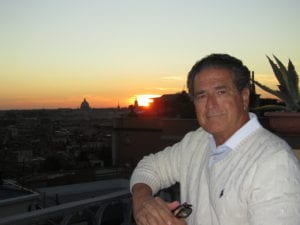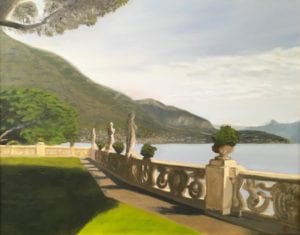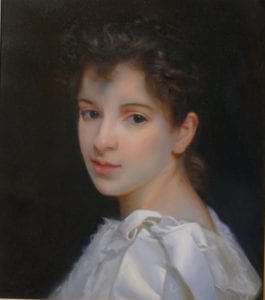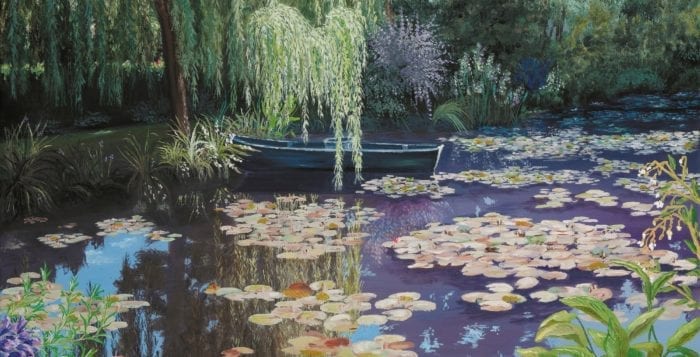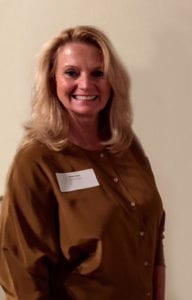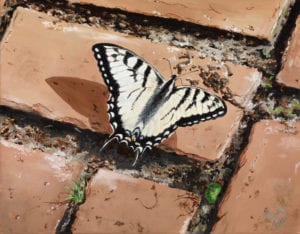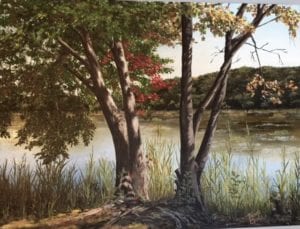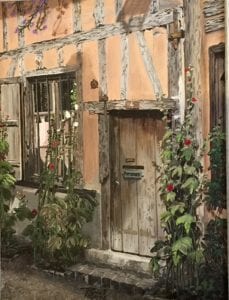By Irene Ruddock
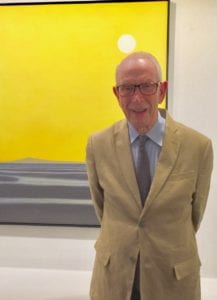
Terence Netter, who divides his time between Setauket and Saint-Georges-sur-Cher, France, has had an illustrious career that includes teaching, painting and wide-ranging administrative work in the arts. Locally, he is known for his achievements as the first director of the Staller Center for the Arts at Stony Brook University, and, of course, for the visionary power of his paintings. Honored recently for these contributions by Gallery North, Netter is referred to as a “community treasure.”
As Staller Center director for 19 years, what was your vision for the center?
My goal was to make the center a major showcase for the arts. I am delighted to see how it has grown under the present leadership continuing to ever expand this goal.
What inspired you to evolve into painting landscapes in a minimalist style?
I changed my style of paintings to do works which evoke a sense of peace. When I moved to France, I became a practitioner and devotee of Zen Mediation which is an ancient technique of emptying one’s mind of distractions to enter a zone of peace. It calms your spirit so that you feel at one with the universe. My present painting process is a form of this meditation, and my newer paintings are an indication of this change. I call them “Zenscapes.”
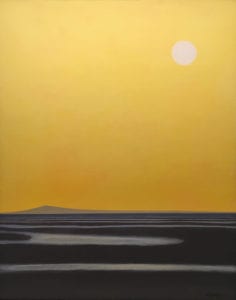
As a Christian, how do you reconcile Christianity and Zen Meditation?
The tradition of Christianity includes meditation. I was imbued with this through my study with the Jesuits. I find that both are traditions of finding peace in this ever more contentious and noisy world. Prayer and meditation are both ways of searching for the great mysteries of life and both have led me to paint in a peaceful manner.
How are art and religion entwined?
They are very much alike. The great philosopher Hegel said that art is the sensuous expression of the visual, and religion is the imaginative. Art and religion are two different forms of expressing the fact that the human spirit continues to evolve toward the infinite.
You often speak of achieving peace in your paintings. How do you define peace?
St. Thomas Aquinas says that “Peace is the tranquility of order.”
I’ve noticed that you often have the sun or moon in your paintings. What is the significance?
It’s the circle of life. The sun represents male power as exemplified by the god Apollo while the moon is represented by the goddess Venus. If you really want the answer to that, you will have to speak with my psychiatrist!
You also describe yourself as a teacher. What is your goal as a teacher?
I feel more complete as a person in the act of teaching. It is, for me, a way of growing. I teach in order to learn. I want to show students that life is an adventure in an unknown country — it is a “vision quest.” My goal as a teacher is to inspire young minds to open up, remove prejudices, and to set people on the path to finding truth. I encourage the study of the great thinkers who have influenced me such Hegel, Rahner, Kant and Chardin, to inspire the reflection necessary for growth. To grow, you have to be plugged into the spirit of the times — the Zeitgeist!
In your lectures, you talk about the search for the meaning of art through the centuries. What is your definition of the meaning of art?
I believe that art is nature reborn through the free consciousness of the human spirit. Artists create a new world for people to enter. Art is the visual expression of that infinitely evolving human spirit which is why each generation has to create their own vision of art.
Why did you choose the Loire Valley for your second home?
I went there when I was young and decided to take my wife Therese to visit on our 30th anniversary. We bought a little farmhouse and that is where I now do most of my painting. There I was inspired to paint the French Perspectives series and others that express “emotions recollected in tranquility.” My paintings have been described as capturing that special light and perfumed air of the Loire Valley.
You have mentioned that you spend time writing in France. Can you share with our readers what you are writing?
Yes, I am writing my memoirs!
Where can we see your art?
In Setauket, I am exhibiting my selected works at Gallery North (90 North Country Road, Setauket) until June 17 and in New York City I am represented by the Woodward Gallery. I am especially honored to be in many museums and private collections in the States and in Europe.
What do you want the viewer to feel or see when they view your paintings?
I want the viewer’s mind and eye to take a walk beyond the here and now. I hope that they experience that there is more beyond the horizon — the possibility of existence beyond the reach of our senses, even though we can’t see it. Most of all, I wish that they sense the deep peace that I am trying to evoke in my paintings.

